 W
WThe Alexander von Humboldt Biological Resources Research Institute , sometimes referred to as IAVH, is an independent non-regulatory research institute of the Executive Branch of the Government of Colombia charged with conducting scientific research on the biodiversity of the country including hydrobiology and genetic research. The institute is named after Alexander von Humboldt, a German naturalist who conducted research on the biodiversity of Colombia and Latin America.
 W
WThe American Mushroom Institute is the industry trade group for the U.S. mushroom industry.
 W
WThe Archbold Biological Station (ABS) is a research institute with a surrounding 5,192.63-acre (21 km2) estate near Lake Placid, Florida, USA. It includes an extensive area of Florida scrub, a scientifically interesting and highly threatened ecosystem. It was established in 1941 by Richard Archbold when his sponsorship of zoological research in New Guinea was curtailed by the outbreak of the Second World War in the Pacific region. The Station supports 19 federally listed threatened species, including the Sand Skink and 13 endemic plant species. It is a venue for field research and education.
 W
WThe Association of Field Ornithologists (AFO) is an American ornithological society, with a strong focus on field studies and banding, priding itself as serving as a bridge between professional and amateur ornithologists. It was founded in 1922 as the New England Bird Banding Association, then becoming the Northeastern Bird-Banding Association, before expanding its geographical scope and acquiring its current name. It publishes a twice-yearly newsletter, AFO Afield, as well as the quarterly Journal of Field Ornithology. The AFO is a member of the Ornithological Council.
 W
WBardsey Bird and Field Observatory is a bird observatory on Bardsey Island, off the Welsh coast.
 W
WThe BioGeM Institute is a nonprofit consortium formed by the National Research Council (CNR), the University of Naples "Federico II", the LUMSA of Rome, the Trieste AREA Science Park, the University of Udine, the Stazione Zoologica Anton Dohrn of Naples, the University of Sannio in Benevento, the University of Foggia, the University of Milan Bicocca, the Second University and the Suor Orsola Benincasa University of Naples, the Chamber of Commerce of Avellino and the local mountain community of Ufita Valley.
 W
WBirdLife Sverige is a Swedish ornithological society founded in 1945 and a BirdLife partner. It currently has 11,000 members, 24 regional branches, and a staff of 24.
 W
WThe British Society for Plant Pathology, or BSPP, is a UK-based organisation of British plant pathologists but accepts members from all countries. It was founded in 1981 and publishes three scientific journals: Plant Pathology, Molecular Plant Pathology and New Disease Reports. The BSPP has links to the International Society for Plant Pathology.
 W
WBroome Bird Observatory is an educational, scientific and recreational facility located 24 km from Broome in the Kimberley region of Western Australia. It began operating in 1988 under the auspices of the non-profit organisation Birds Australia to provide a base for the study and enjoyment of the birds of Roebuck Bay and adjoining areas. The bay boasts the highest diversity of migratory waders in Australia. In March and April, immense flocks of waders can be watched as they depart to their breeding grounds in the northern hemisphere.
 W
WCulture Collection University of Gothenburg (CCUG) is a Swedish microbial culture repository located in Gothenburg (Sweden) established by Enevold Falsen in 1968 and affiliated with the University of Gothenburg. The current curator is Prof. Dr. Edward R. B. Moore and it maintains bacterial, filamentous fungal and yeasts cultures, but it does not hold extremophiles and does not dispatch the most hazardous organisms classified in biosafety level 3. More than 73,000 strains of more than 4,500 species have so far been examined, whereof more than 21,000 are displayed on Internet. It represents the largest public collection of bacteria in Europe. The CCUG has been devoted to the identification of bacteria. The search engine is sophisticated and useful for clinical microbiologists who may check their diagnosis of an unusual species or order on-line a reference strain.
 W
WThe Department of Zoology, founded in 1860, is a science department in the University of Oxford's Mathematical, Physical and Life Sciences Division.
 W
WFriday Harbor Laboratories (FHL), is a marine biology field station of the University of Washington, located in Friday Harbor, San Juan Island, Washington, United States. Friday Harbor Labs is known for its intensive summer classes offered to competitive graduate students from around the world in fields of marine biology and other marine sciences.
 W
WThe I.I. Schmalhausen Institute of Zoology of National Academy of Sciences of Ukraine is the leading institution in Ukraine doing research in zoology. At present, this is the leading regional center of zoological research and expertise in the Eastern Europe.
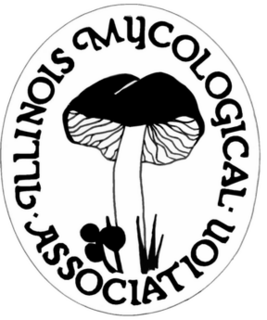 W
WThe Illinois Mycological Association or IMA is a group of mushroom enthusiasts, citizen scientists, foragers, and professional mycologists based in the Chicago area.
 W
WThe Institute of Arctic Biology or IAB of the University of Alaska Fairbanks, is located in Fairbanks, Alaska, USA. The institute was established in 1963 by the Board of Regents of the University of Alaska, with Laurence Irving serving as its founding director. The mission of IAB is to advance basic and applied knowledge of high-latitude biological systems through research, education, and service. The Institute supports faculty, post-doctoral, and graduate research in wildlife biology and management, ecology, evolutionary biology, physiology, genetics, biomedicine, bioinformatics, and computational biology. IAB faculty hold joint appointments within other departments at UAF in the College of Natural Science and Mathematics and the School of Natural Resources and Agricultural Sciences.
 W
WInstitute of Cytology and Genetics of the Siberian Branch of the Russian Academy of Sciences is a research institute based in Novosibirsk, Russia. It was founded in 1957.
 W
WInstitute of Hydrobiology of the Chinese Academy of Sciences is a research institute located in Wuhan, Hubei, China. It was founded in 1950 and specializes in freshwater organisms. It is involved in the study of the finless porpoise and the now extinct baiji dolphin.
 W
WThe John von Neumann Environmental Research Institute of the Pacific is a non profit environmental and anthropological research institute of executive branch of the government of Colombia ascribed to the Ministry of Environment and Sustainable Development and charged with conducting research and investigations on the Pacific littoral and the biodiversity of the Chocó biogeographic hotspot.
 W
WThe Las Cruces Biological Station / Wilson Botanical Garden is located in the southern Puntarenas province of Costa Rica, and is the newest of the three research stations operated by the Organization for Tropical Studies (OTS). Las Cruces includes a biological research station, tourist facilities, and the botanical gardens started by Robert and Catherine Wilson, and bequeathed to OTS.
 W
WThe Institute for Typhus and Virus Research was a scientific research centre founded in the city of Lwów, now known as Lviv. Between 1920 and 1939, it was part of Jan Kazimierz University's Biology Department. Research into a typhus vaccine was started in 1920 by parasitologist Rudolf Weigl. Weigl developed the first widely-used typhus vaccine by using human louse-feeders.
 W
WThe Max Planck Institute for Biological Cybernetics is located in Tübingen, Baden-Württemberg, Germany. It is one of 80 institutes in the Max Planck Society.
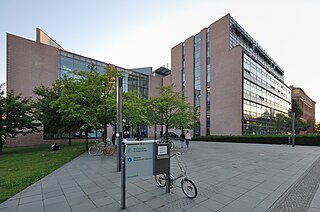 W
WThe Max Planck Institute for Infection Biology (MPIIB) is a non-university research institute of the Max Planck Society located in the heart of Berlin in Berlin-Mitte. It was founded in 1993. Arturo Zychlinsky is currently the Managing Director. The MPIIB is divided into nine research groups, two partner groups and two Emeritus Groups of the founding director Stefan H. E. Kaufmann and the director emeritus Thomas F. Meyer. The department "Regulation in Infection Biology" headed by 2020 Nobel laureate Emmanuelle Charpentier was hived off as an independent research center in May 2018. The Max Planck Unit for the Science of Pathogens is now administratively independent of the Max Planck Institute for Infection Biology. In October 2019, Igor Iatsenko and Matthieu Domenech de Cellès established their research groups at the institute, Mark Cronan started his position as research group leader in March 2020. Silvia Portugal joined the institute in June 2020 as Lise Meitner Group Leader. Two more research groups where added in 2020, Felix M. Key joined in September and Olivia Majer in October, completing the reorganization of the Max Planck Institute for Infection Biology.
 W
WThe National Institute of Agricultural Botany (NIAB) is a plant science research company based in Cambridge, UK.
 W
WThe National Marine Life Center is an independent, non-profit marine animal hospital, science, and education center based in Bourne, Massachusetts. Their mission is to rehabilitate for release stranded sea turtles, seals, dolphins, porpoises, and small whales, and to advance scientific knowledge and education in marine wildlife and conservation.
 W
WThe New York Entomological Society was founded in 1892. The Brooklyn Entomological Society merged with the Society in 1968. The Society publishes Entomologica Americana which is the successor to the Journal of the New York Entomological Society.
 W
WThe FitzPatrick Institute of African Ornithology is a South African biological research and conservation institute based at the University of Cape Town. The mission statement of the Institute is “to promote and undertake scientific studies involving birds, and contribute to the practice affecting the maintenance of biological diversity and the sustained use of biological resources”.
 W
WThe Philadelphia Herpetological Society (PHS) is the oldest, continually operated reptile group in North America. It was founded by Roger Conant (herpetologist) and a group of like-minded herpetologists in 1952. The current president is Mark Miller.
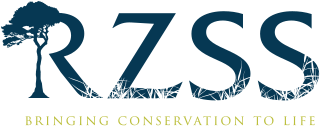 W
WThe Royal Zoological Society of Scotland is a learned society and registered charity based in Edinburgh, Scotland. It was founded by, Thomas Haining Gillespie, in 1909. In 1913, Edinburgh Town Council bought a large plot of land on Corstorphine Hill for the society - this later opened to the public as Edinburgh Zoo. The Society received its Royal Charter in 1913. The principal objective of the Society mentioned in the original charter is: To promote, facilitate and encourage the study of zoology and kindred subjects and to foster and develop amongst the people an interest in and knowledge of animal life.
 W
WThe Seto Marine Biological Laboratory, is a marine biology field station of Kyoto University. It is located in the small town of Shirahama in Wakayama Prefecture about 230 km from Kyoto.
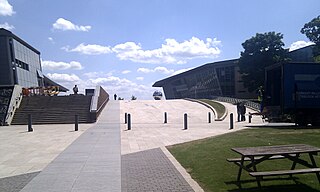 W
WThe Wellcome Genome Campus is a scientific research campus built in the grounds of Hinxton Hall, Hinxton in Cambridgeshire, England.
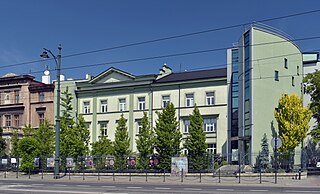 W
WThe Władysław Szafer Institute of Botany in Kraków, Poland is a major European herbarium containing a collection of over 650,000 vascular plants, bryophytes, algae, fungi, lichens, and various plant fossils. The vascular plant specimens are primarily from Central Europe with a specialization in alpine plants. The bryophytes are Polish, Antarctic and subAntarctic, and East African. The fossil plants are largely Central European. Main publications include Acta Palaeobotanica, and the Polish Botanical Journal.